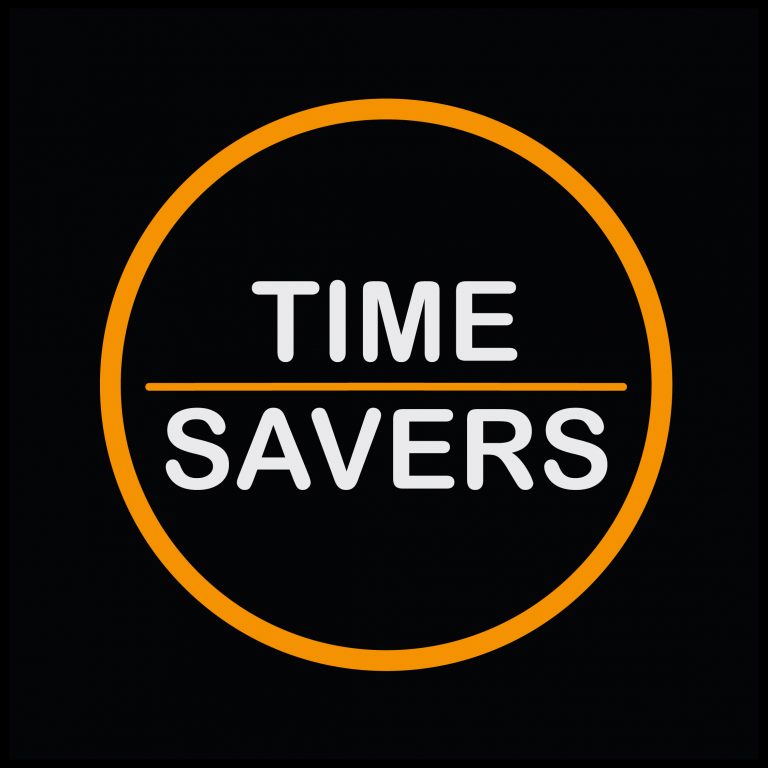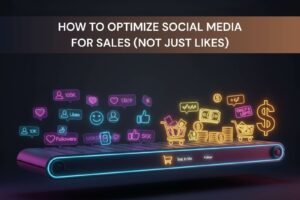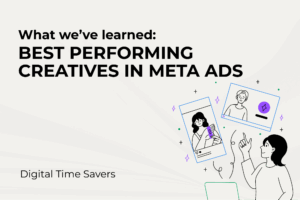And everyone’s doing it. Your competitors are posting daily. Your customers’ feeds are drowning in “valuable insights” and “game-changing tips.” Most of it becomes background noise that gets scrolled past in half a second.
But there is one thing that separates content that works from content that wastes money and that is the elusive “share.” When someone shares your content, they’re endorsing it. They’re putting their own reputation behind your message. That’s trust you can’t buy with ads.
Getting shares means understanding what makes people hit that share button instead of just liking and moving on. Because there’s a massive difference between content people consume and content people share.
Most businesses are creating content that, at best, gets consumed. They’re checking the box, filling the calendar, and feeding the algorithm. But the businesses actually growing from content marketing are the ones that are creating things people can’t help but pass along.
The gap between “that’s interesting” and “Mike needs to see this” is where real content marketing happens. And that’s exactly what we’re going to break down here. Ready to uncover how to consistently create content that crosses that gap? This is likely the most important skill you can develop this year and beyond. So, don’t ignore it!
Instead, let’s uncover how we can become content kings and how you can start using these tips in your content right away.
Why People Share Content in 2025
People share content for the same reasons they always have. They want to look smart. They want to help their friends. They want to show what they believe in. They want to feel like they’re contributing something useful. Basic human stuff that hasn’t changed since Facebook was invented.
What has changed? The sheer amount of content competing for that share. Your audience is drowning in “10 tips” and “ultimate guides” and “thought leadership.” Their bar for what’s worth sharing has never been higher. Most content doesn’t even get consumed anymore, let alone shared.
The stuff that actually gets shared in 2025 does one of three things…
- It solves an urgent problem
- It triggers real emotion
- It helps people say something about themselves.
Everything else is just noise. The static kind. Make sense? If not, let’s take a closer look at how this works in practice…
A B2B SaaS startup spent weeks creating this massive PDF about cloud integration best practices. Really good stuff, thoroughly researched, genuinely helpful. Total shares? Maybe five, all from employees.
So they took the exact same information and repackaged it as a LinkedIn carousel…
“5 Mistakes Costing Your IT Team $10K/Year.”
Boom. IT managers started sharing it with their teams. CFOs tagged their tech leads. Random developers shared it to look smart. The information didn’t change, but now it was shareable. It had urgency (losing money right now), it had identity value (smart leaders catch these mistakes), and it was immediately useful (fix these five things).
That PDF was content. The carousel was shareable content. Most businesses never figure out the difference.
But what about the content of carousel itself? What’s the best type of content? The type that gets shared? Let’s go through that now.
Strategy 1: Lead With Emotion
Facts tell, emotions sell. And more importantly, emotions get shared. Nobody shares your content because your statistics were accurate. They share because you made them feel something.
The content that spreads in 2025 hits emotional triggers hard. Awe makes people share to spread inspiration. Laughter makes them share to brighten someone’s day. Outrage makes them share to rally their tribe. Even sadness gets shared when it feels authentic and human.
Here’s a quick checklist:
- Inspiration without the cheese. Real success stories, actual transformations, genuine community impact. Not that corporate “we believe in excellence” nonsense. A landscaping company sharing before/after photos of a free makeover they did for a struggling veteran’s home? That gets shared. Your mission statement? Nobody cares.
- Humor that doesn’t try too hard. Industry inside jokes, relatable struggles, the absurd things every professional in your field experiences. When accountants share memes about Excel crashes during tax season, that’s real. When brands try to force viral moments with scripted “office fun,” everyone can smell the desperation.
- Surprise that actually surprises. Not “Did you know 73% of marketers use email?” (No way! Really?!!) but “Did you know the average person spends 5 years of their life waiting in lines?” The first is a statistic. The second makes people stop and think, then share to blow other minds.
- Empathy that’s earned. A mental health app posted “Things your anxious brain tells you at 2am” on TikTok. Millions shared it because it was painfully accurate. They didn’t say “we understand anxiety.” They proved it by naming the exact thoughts people have.
There is one very important thing to remember about viral content…you can’t fake it. The overproduced video where employees pretend to be spontaneously dancing…everyone knows it’s forced. But the founder honestly sharing a failure? That vulnerability gets shared because it’s real.
Strategy 2: Make Content Effortless to Consume
Nobody shares content they have to work to understand. They share what takes three seconds to get and makes them look smart for passing it along.
People want value delivered in bite-sized chunks they can consume between meetings or while waiting for coffee. If they can’t understand your point in the first five seconds, they’re already scrolling to something else.
The formats that get shared in 2025 respect people’s attention spans include:
- Carousels and slideshows break complex topics into swipeable chunks. Each slide is one idea, one takeaway. People can stop anywhere and still get value. Plus, they’re perfect for sharing because viewers know exactly what they’re passing along – no surprises buried in paragraph 12.
- Infographics turn boring data into visual stories. Nobody shares spreadsheets. Everyone shares that chart showing how much time they waste in meetings. Same information, just dressed up for human consumption.
- Short videos that make their point fast. We’re talking 15-45 seconds, not those five-minute “short-form” videos brands think people want. Get in, deliver value or entertainment, get out. Respect the scroll.
- Numbered lists that promise specific value. “7 Things That Kill Your SEO” beats “SEO Best Practices” every time. Numbers set expectations and make content feel manageable.
Harsh truth time! Don’t worry, you can handle it…
Most businesses create content for themselves, not their audience. They write what they want to say, not what people want to consume. Then they wonder why their “valuable insights” die at 50 views while some random carousel about email mistakes goes viral. Format matters as much as the information itself.
Strategy 3: Deliver Practical Utility
Want to guarantee shares? Give people something they can use, not just read. With everyone drowning in “educational content,” practical tools cut through because they solve real problems right now.
Who doesn’t love a new hack? A new idea? A piece of information they can act on right away to improve their work flow now?
The answer is everyone. Everyone loves that stuff. But what is that stuff we’re talking about?
- Templates that save people hours. Spreadsheets they can copy. Email scripts they can swipe. Design mockups they can customize. When someone shares your template, they’re not just sharing content – they’re sharing a solution that makes them look like a hero to their network.
- Checklists that simplify complex processes. People love feeling organized, and they love helping others get organized. That “Website Launch Checklist” or “Tax Prep Documents Needed” list? Screenshots of those live on phones for months, getting shared every time someone asks for help.
- Mini-tools that solve specific problems. ROI calculators, compatibility quizzes, simple diagnostics. These get shared because they’re immediately useful and make the sharer look resourceful. “Hey, use this tool I found” beats “read this article I liked” every single time.
A perfect example of this is Canva. Every blog post came with free templates. Bloggers didn’t share Canva’s articles, they shared the templates, which happened to have Canva’s branding. Each share was both valuable content and subtle marketing. Genius move that most brands still haven’t figured out.
And you can do the same! Subtly brand everything. Small logo, website URL, your company name in the filename. Nothing obnoxious, just enough so when your checklist gets shared for the fifteenth time, people know where it came from. Your practical content becomes a traveling salesperson, working even when you’re not.
Strategy 4: Tell Stories, Not Just Facts
The difference between content that gets consumed and content that gets shared often comes down to whether you wrapped your message in a story. Stories make abstract concepts concrete. They make companies human. They make boring topics interesting. And most importantly, they give people something to retell.
But what kind of stories should you tell? There’s a few good templates you can follow.
The transformation story works every time. Where someone started, what nearly broke them, how they pushed through. People share these because they see themselves in the struggle or they know someone who needs to hear it.
Customer stories beat any marketing copy you could write. Real experiences from real people create instant credibility. When someone shares a customer success story, they’re really saying “this could be you” to their network. Way more powerful than sharing a sales page.
Behind-the-scenes content that shows you’re human. The founder pulling all-nighters. The team celebrating small wins. The mistakes that taught you something. This stuff spreads because it breaks the corporate wall and shows real people doing real work.
Everyone loves a good story. And if you don’t, you’re likely a robot. Which, these days, might be the case more than half the time.
The moral of the story (too on the nose?) is that stories travel. Facts don’t. Wrap your message in a story and watch it spread.
Strategy 5: Leverage Trends Without Losing Identity
Every week there’s a new trending audio, meme format, or hashtag taking over everyone’s feed. Jumping on trends can give your content instant reach (but only if you don’t look desperate doing it).
The brands that nail trend-jacking understand one rule: the trend is just the vehicle, not the message. They use what’s popular to say something authentic, not to awkwardly force their product into a viral moment.
But one word of caution…
The worst thing you can do is chase every single trend. When law firms start doing trending dances, everyone loses. Pick your moments. If a trend naturally fits your message, use it. If you’re forcing it, skip it.
Here’s a quick test to determine if it’ll work for you. Ask yourself, would this content make sense without the trend? If yes, the trend will amplify it. If no, you’re just chasing views that won’t convert. A trending audio might get you reach, but if people can’t remember who you are five seconds later, what’s the point?
Smart brands use maybe one trend a month, and they make it count. Everyone else is exhausting their audience (and their team) trying to keep up with every viral moment. Trends are seasoning, not the main dish.
Strategy 6: Encourage Audience Participation
When people see themselves in your content, they share it. Even better? When they help create it, they have to share it. It’s human nature. We promote what we’re part of.
Interactive content is inherently shareable because people have skin in the game. They’re not just consuming your content, they’re contributing to it. And nobody can resist sharing something they helped create.
The smartest brands are using several participation tactics that practically guarantee shares:
- Polls and quizzes seem simple but they’re share machines. “What type of entrepreneur are you?” gets shared because people want to compare results. “Vote: Meetings before 9am – yes or no?” gets shared because people want backup for their opinion.
- User-generated content turns customers into your marketing team. When you feature someone’s photo, review, or story, they’ll share it with everyone they know. Their mom, their coworkers, their college roommates. You just got access to an audience you could never reach with ads.
- Customer features with proper tags create sharing loops. Feature a customer’s success story and tag them? They share it. Their network sees it and wants their own feature. The cycle continues. Free marketing that builds itself.
- Branded challenges that give people a reason to participate. Not “#ShareOurProduct” (nobody cares) but something that lets them express themselves. A coffee shop asked people to share their weirdest coffee order. Hundreds participated because it was about them, not the brand. Friends tagged friends to top each other’s weird orders. Thousands of shares from one simple prompt.
The magic of participation content is that people share it twice. Once when they participate, again when you feature them. Double the reach with half the effort.
Strategy 7: Platform-Specific Optimization
Each platform has its own sharing culture (has anyone learned what X’s deal is yet? What about Threads? Bet you vaguely remember that name) and algorithm priorities. Understanding these differences is the gap between content that gets created and content that gets distributed.
Quick rundown on what to expect for each platform:
TikTok treats shares like gold. The algorithm pushes content that gets shared way harder than content that just gets views. Short, surprising, “wait, what?” moments win here. Educational content works if it’s mind-blowing. Emotional content works if it hits immediately. But it all needs to happen in under 30 seconds or you’ve lost them.
Instagram makes carousels and Stories the easiest to share. Feed posts are pretty but carousels get saved and sent. Stories with polls, quizzes, or quick tips get shared to friends’ DMs constantly. The key? Make each slide or story frame valuable on its own.
LinkedIn rewards thought leadership that makes people look smart. Carousels explaining complex topics simply. Posts with counterintuitive business insights. Content that professionals can share to position themselves as forward-thinking. That “5 AI Tools Every HR Manager Should Try” carousel? HR managers couldn’t resist reposting it because it made them look innovative to their network.
Pinterest is playing the long game. How-to guides and infographics created today will still be getting shared three years from now. It’s the only platform where evergreen content actually stays evergreen. Invest in visual guides that solve timeless problems.
Most brands create one piece of content and spray it everywhere unchanged. Then they wonder why their Instagram post flopped on LinkedIn. Master content creators start with the message, then reshape it for each platform’s sharing behavior.
Strategy 8: Repurpose Content for Multiple Touchpoints
Stop creating content from scratch every single day. One good idea should feed your content calendar for a week.
Smart content creators treat every piece like a Swiss Army knife…one tool, multiple uses. That blog post you spent hours writing can also be five social posts, three videos, and a podcast topic. You just have to break it apart and rebuild it for different formats and audiences.
Take a 1,200-word blog post about reducing customer churn. That’s your foundation. Pull the key points into a LinkedIn carousel for busy executives (look for this article on Linkedin). Extract the shocking stats for Instagram Stories. Film yourself explaining the main concept in 30 seconds for TikTok. Screenshot the best customer quote for Twitter. Turn the whole thing into a detailed YouTube video. Same insights, six different ways to get shared.
Each format reaches different people in different moods. Someone might ignore your blog but save your carousel. Skip your video but screenshot your infographic. The executive who won’t read 1,200 words will absolutely watch your 30-second TikTok between meetings.
The multiplier effect is real. When you repurpose correctly, you’re giving your best ideas multiple chances to spread.
Most brands exhaust themselves creating new content daily while their best ideas die after one post. Meanwhile, smart marketers are still milking that one great case study from six months ago, just packaged differently each time.
Common Mistakes to Avoid in 2025
We’ve covered what works, now let’s talk about what kills shareability before it starts.
These aren’t edge cases. These are the mistakes we see every day from brands who can’t figure out why their “amazing content” isn’t spreading. Avoid these at all cost!
- Treating every post like an ad. Nobody shares commercials unless they’re Super Bowl good. People share value, entertainment, and insights. The moment content feels promotional, sharing dies. Your product can be in the content, but if the product IS the content, you’ve already lost.
- Phoning in the captions. You spent three hours on the perfect graphic then wrote “Check this out! 🔥” as the caption. Strong captions give context, add value, and most importantly…give people the words to share with. When someone shares your post, they often copy your caption. Make it worth stealing.
- Never asking for shares. Sounds obvious but most content never mentions sharing. A simple “Send this to someone who needs to hear it” or “Share if this helped you” can double your shares. Not every post, but when you’ve created something genuinely valuable? Ask. People need permission sometimes.
- Trying to be everywhere at once. You’re posting mediocre content on five platforms instead of crushing it on one. Better to be the must-follow account on LinkedIn than forgotten on LinkedIn, Instagram, TikTok, Twitter, and Pinterest. Pick where your audience shares content and dominate there. Expansion comes after excellence, not before.
But there is one big, colossal mistake you must avoid. And that is assuming good content naturally gets shared. It doesn’t. Shareable content is designed to be shared from the start, not hoped to be shared at the end.
Free Download: Shareable Content Checklist 2025
If you made it this far, we have something extra for yo! Call it a parting gift before we send you off to create killer content that people want to share. Feel compelled to share. Nay! They MUST share. That’s the goal after all. And to do that, use our Shareable Content Checklist!
Our Shareable Content Checklist 2025 includes:
- The 5 emotional triggers that actually drive shares (not what you think)
- Format templates that are crushing it right now on each platform
- Quick tweaks that can double your share rate
- Platform-specific optimization tips that most brands miss
- The pre-publish questions that separate viral from invisible
Print it, pin it next to your desk, check it before every post.
Ready to Get Started?
Can we be real for a second? Most content is forgettable noise that dies a quiet death in the algorithm (RIP favorite piece of content that we thought would cook but ended up going nowhere!). But when you nail the combination of emotional triggers, genuine utility, real stories, and platform-specific packaging? That’s when your content stops being another post in the feed and starts being the post people send to their group chat.
Every share is someone vouching for you with their own reputation. It’s better than any ad you could buy, any influencer you could pay, any algorithm hack you could try. It’s real people telling other real people “this is worth your time.”
To put it simply, people don’t share content, they share feelings, solutions, and stories.
So stop measuring success by how much content you created this month. Start measuring it by how much of your content is still being shared next month.
Because at the end of the day, content that doesn’t get shared is just a very expensive diary entry.















